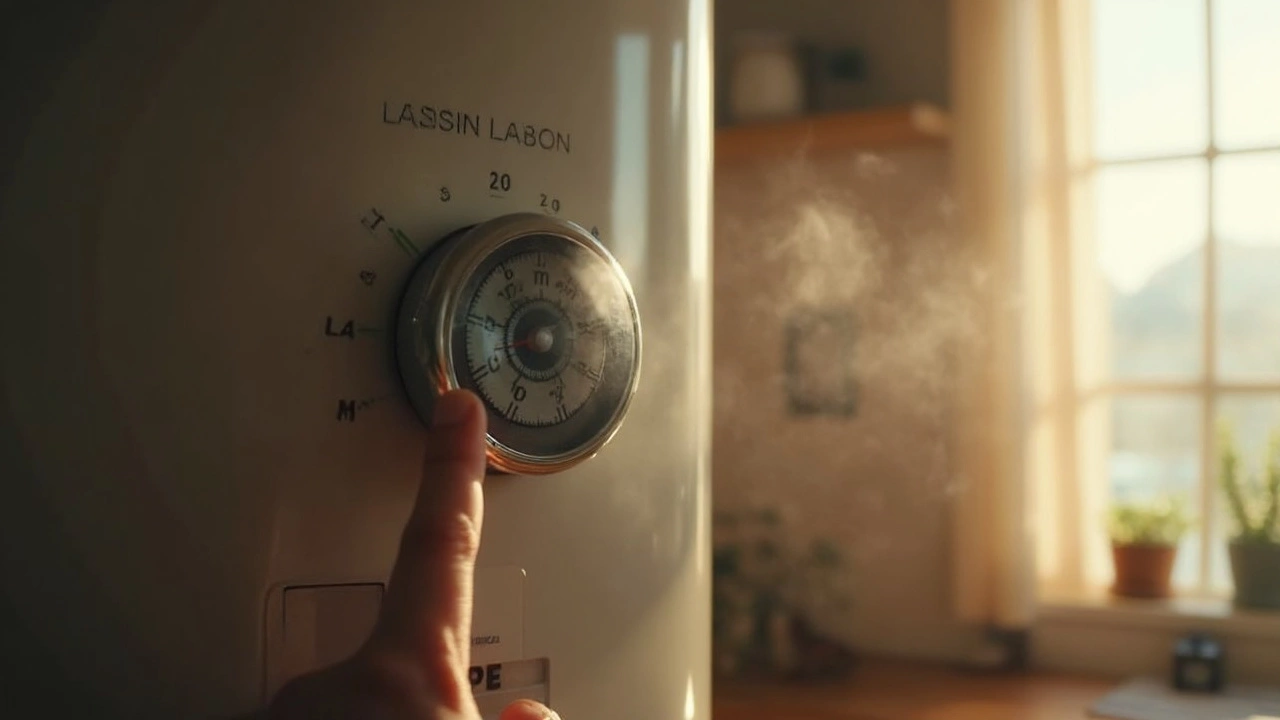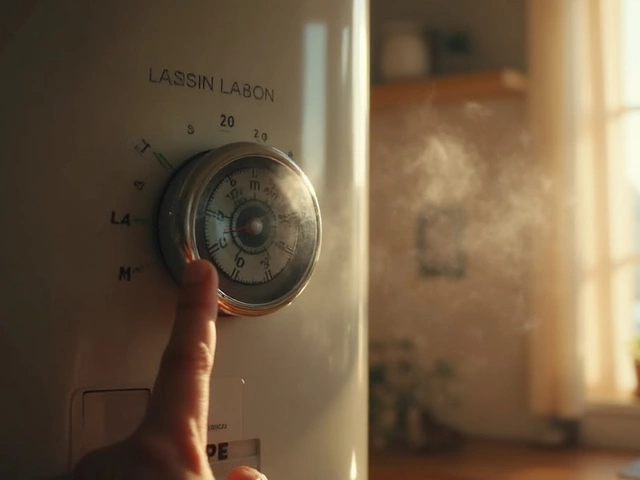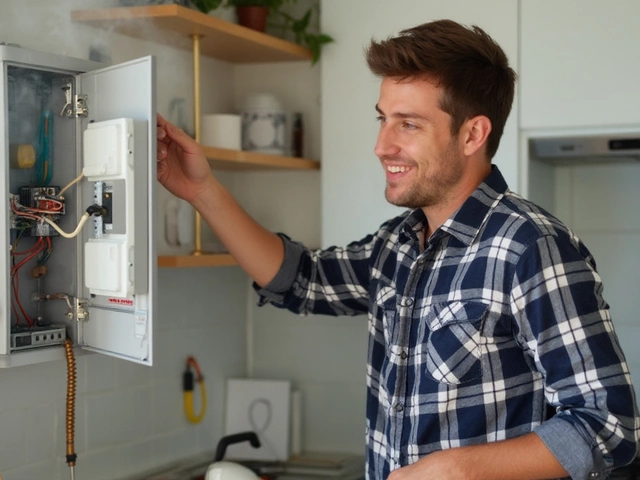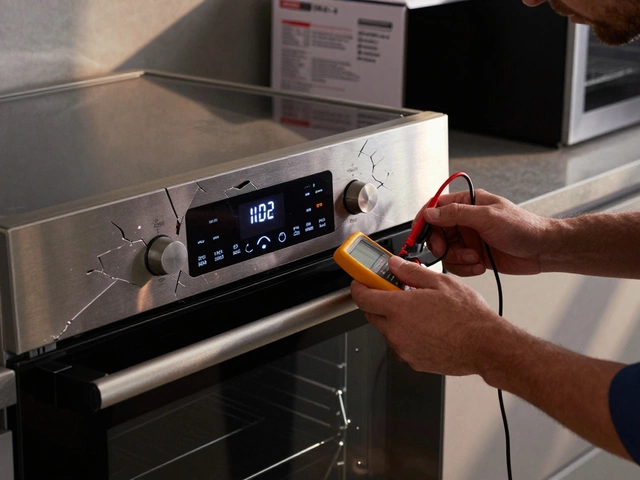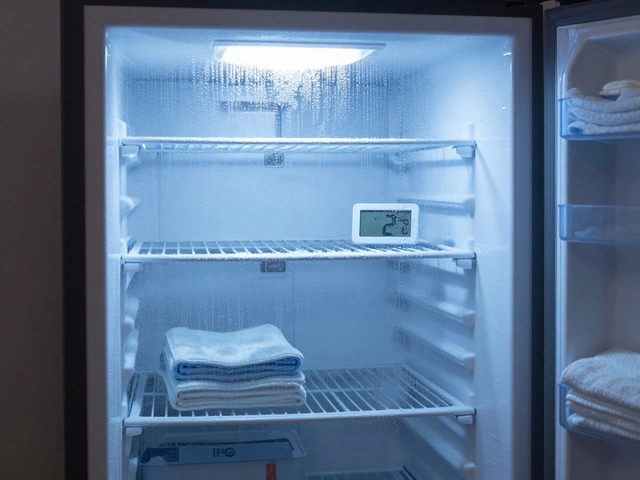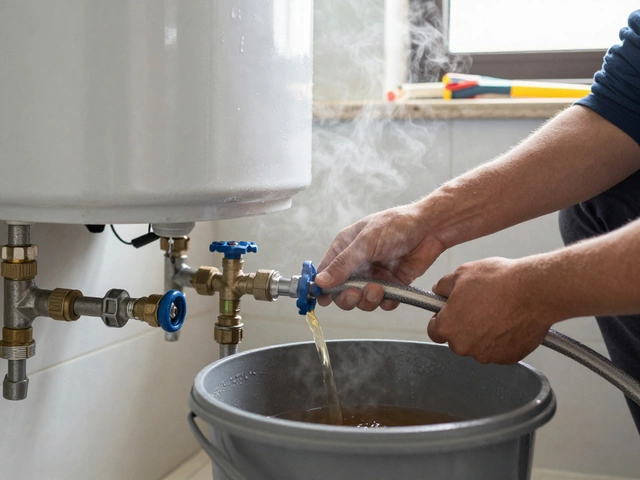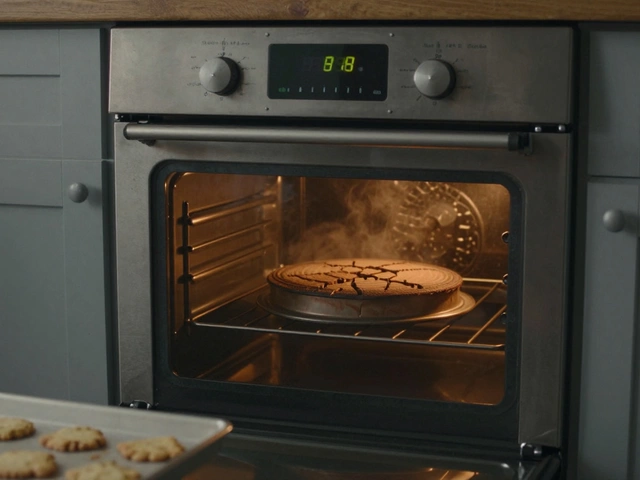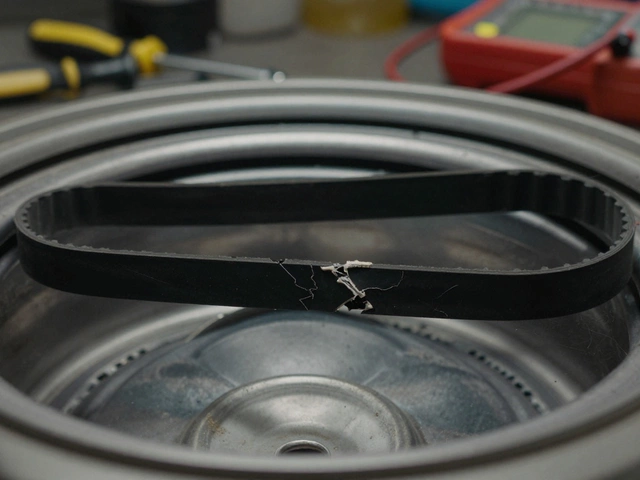If you've ever dealt with unexpected cold showers, you know the importance of a well-functioning hot water heater. But how can you tell when the pesky culprit is the thermostat? Let's start by spotting the tell-tale signs of a bad thermostat. One common indicator is inconsistent water temperature. If your water swings from scalding hot to icy cold, your thermostat might be having some issues.
Another sign? Unusually high energy bills. A faulty thermostat can cause your heater to overwork, racking up those dollars. But don't fret! Determining if your thermostat is the problem is not as complex as it sounds.
Grab a multimeter, and you’re already halfway there. We'll walk through the steps to test it safely at home in our next section. Knowing how to pinpoint a malfunctioning thermostat isn't just handy, it’s empowering. You'll avoid unnecessary repairs or replacements and keep things running smoothly at home.
- Signs Your Thermostat Might Be Faulty
- Testing the Thermostat
- Quick Fixes You Can Try
- When to Call a Professional
Signs Your Thermostat Might Be Faulty
Is your hot water heater acting up, but you're not quite sure what part of it is causing the problem? A common issue could be the thermostat, and there are a few signs to watch out for. One of the most prominent symptoms is erratic water temperature. If one minute you're enjoying a nice warm shower and the next you're shrieking from the cold, chances are your thermostat could be malfunctioning.
Another sign to look out for is an increase in energy bills. A broken thermostat can cause the heater to run more often, thinking it needs to heat the water more than necessary. It's like leaving a light on when you're not in the room - adds up pretty fast, right?
Strange Noises
If your water heater is making odd noises, it could be a symptom of a problematic thermostat. You might hear popping, hissing, or rumbling sounds. These noises can sometimes be due to sediment buildup, but when coupled with other symptoms, it could signal trouble with the thermostat.
Leaking Water
Leaking is another red flag. While leaks can originate from various sources, including a corroded tank, a faulty thermostat can cause pressure and heat levels to fluctuate, sometimes leading to leaks. Keep an eye out for any pooling water near your heater.
Table: Common Symptoms and Signs
| Symptom | Possible Cause |
|---|---|
| Inconsistent Water Temperature | Faulty thermostat |
| Higher Energy Bills | Thermostat causing overactivity |
| Unusual Noises | Possibly thermostat-related |
| Leaking Water | Pressure changes due to thermostat |
Understanding these signs helps you diagnose the issue more swiftly, preventing a full breakdown of your system. Keep this checklist in mind next time your heater acts up, and save yourself from unexpected icy showers or costly repairs!
Testing the Thermostat
So, you've got a hunch that your hot water heater might be acting up. Time to roll up those sleeves and test that thermostat! You'll need a trusty multimeter to get started – it's a small gadget that measures electrical voltage, current, and resistance, and is quite the reliable companion for this task.
Safety First!
Before diving into testing, always ensure your safety. Turn off the power to your water heater – we don't want any shocking surprises. Head over to your circuit breaker and switch off the connection to the heater. Double check with your multimeter that there’s no power running through the heater before you start fiddling around.
Grab Your Tools
Here’s what you need:
- Multimeter
- Screwdriver
- Your trusty flashlight (a little extra light can never hurt!)
Step-by-Step Testing
- Once the power is confirmed off, remove the access panels on your water heater. These are usually secured with screws, so the screwdriver comes in handy here.
- Beneath the panels, you'll find the thermostat – your problem child, possibly. Carefully peel back the insulation but be gentle, you’ll need to put it back later.
- Set your multimeter to the 250-volt AC range. You’ll need this to measure if your thermostat is conducting electricity properly.
- Test the upper and lower thermostat separately. Place one probe on a terminal of the thermostat and the other probe on the heater body or a grounding spot.
- If the multimeter reads zero or shows no movement, your thermostat might be busted. If it shows voltage where it shouldn’t, well, Houston, we’ve got a problem!
With these steps, you can confidently figure out if your thermostat is at fault. It's a straightforward process that can save you time and potential headache. Still unsure? It might be time to call in the professionals, but at least you’ll sound like you know your stuff!

Quick Fixes You Can Try
Before reaching for the phone to call a professional, let's talk about some quick and easy fixes you can try yourself when your hot water heater thermostat starts acting up. These can often get things back on track without breaking the bank or too much sweat.
Reset Your Thermostat
Sometimes, all your thermostat needs is a simple reset. Most water heaters come with a reset button. Begin by turning off the power to the heater for safety. Press the reset button, usually located near the thermostat, hold it for a few seconds, and then release. Turn the power back on and see if this solves the problem. It’s a quick step and often the first one to try.
Check for Loose Wiring
Loose wiring can cause your hot water heater to misbehave. Begin by switching off the power supply. Gently remove the heater’s access panels, and peek inside. Look for visibly disconnected or loose wires. Tighten any loose connections you find, but keep in mind that if wires look damaged or worn out, leaving it to a professional is best.
Adjust the Temperature
If your water takes ages to heat or doesn’t seem warm enough, try adjusting the temperature settings. Carefully remove the thermostat cover (again, ensure the power is off). Most water heaters recommend a setting around 120°F, for both efficiency and safety. Adjust the dial, then replace the cover, and restore power. Check if this makes a difference in water temperature after a few hours.
- Turn power off at the circuit breaker.
- Locate and remove the thermostat access panels.
- Identify the temperature dial and adjust as needed.
- Replace the panels securely and turn power back on.
These steps could be all you need to fix the issue without any help. But remember, if the problem persists or you’re unsure, calling a professional is always a smart move to avoid any mishaps.
When to Call a Professional
Sometimes, despite your best efforts, a problem can be too complex or risky to handle on your own. Here's when you should start thinking about calling in a pro.
Complex Electrical Issues
If testing doesn't make the problem obvious, and there’s still no hot water, electrical wiring might be the issue. Electrical repairs can be dangerous without proper training. A certified professional can not only repair but also ensure everything meets safety standards.
Persistent Thermostat Issues
If you’ve replaced the thermostat yet still experience unpredictable water temperatures, it’s time to call someone with experience. Continuous issues can indicate underlying problems beyond the thermostat, like faulty heating elements or sediment build-up.
Warranty Concerns
Check your hot water heater warranty details. Sometimes, doing self-repairs might void the warranty. Instead, let a professional manage the repairs to keep the warranty intact.
Installation of New Heater
So, you've decided to replace your old heater. Great – but the installation? Not so much. Improper installation can lead to inefficiencies and safety hazards. Pros do this right from the start, ensuring your new unit runs like a champ. While the upfront cost may seem high, it saves on potential future headaches.
Need more incentive? According to a survey by the U.S. Department of Energy, properly installed heaters tend to last 5 years longer than those installed haphazardly. Why not let the pros handle it?
Remember, a reliable professional isn’t just someone who knows their way around a water heater. They also save you time and peace of mind. When in doubt, it’s smart to bring in the experts.

